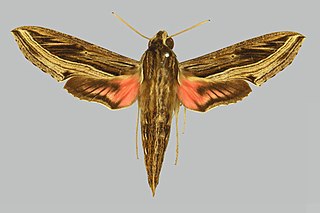
Hippotion aporodes is a moth of the family Sphingidae. It is known from forests from Ivory Coast to the Congo Basin and Uganda.
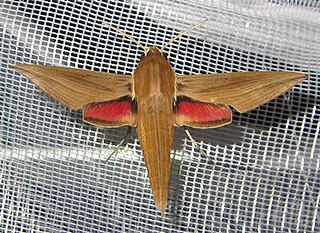
Hippotion eson is a moth of the family Sphingidae. It is very common in most habitats throughout the Ethiopian Region, including Madagascar and the Seychelles. It is a migratory species.
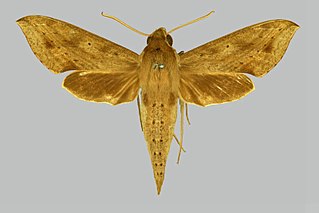
Hippotion irregularis is a moth of the family Sphingidae. It is known from forests from Liberia to Congo, Uganda and western Kenya. It is also found in the Usambara area of Tanzania.
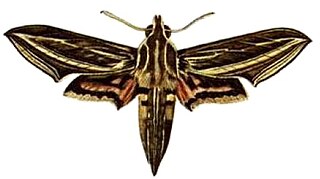
Hippotion osiris is a moth of the family Sphingidae. It is common throughout most of the Ethiopian Region, including Madagascar and the Seychelles. Occasional vagrants have been recorded from Spain. It is uncommon on the East African coast. This species is an occasional migrant.

Hippotion moorei is a moth of the family Sphingidae. It is known from dry areas from northern Tanzania to Ethiopia and Somalia.

Hippotion rosae is a moth of the family Sphingidae first described by Arthur Gardiner Butler in 1882. It is found in Africa.

Macroglossum trochilus, the African hummingbird hawk-moth, is a moth of the family Sphingidae. The species was first described by Jacob Hübner in 1823. It is very common in most habitats throughout southern and eastern Africa and in the Comoro Islands.

Chloroclanis is a genus of moths in the family Sphingidae, containing one species, Chloroclanis virescens, which is known from forest from west Africa to Angola, the Congo, Uganda and western Kenya and Tanzania.

Oligographa is a genus of moths in the family Sphingidae, containing one species Oligographa juniperi, which is known from South Africa and Mozambique. The species is commonly known as the juniper hawk moth.
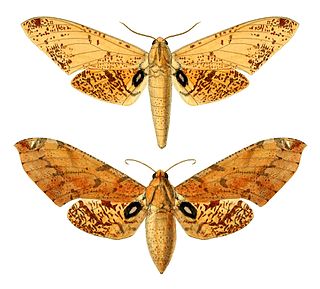
Platysphinx stigmatica is a moth of the family Sphingidae. It is known from forests from Nigeria to the Congo, Angola and western Uganda.

Platysphinx phyllis is a moth of the family Sphingidae. It is known from Sierra Leone to Nigeria.
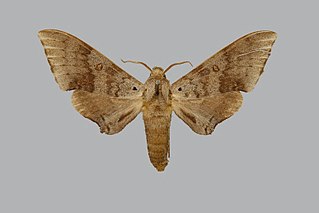
Neopolyptychus prionites is a moth of the family Sphingidae. It is known from lowland forests and heavy woodland from Guinea to the Congo and western Uganda.
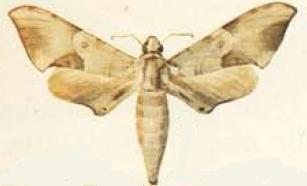
Neopolyptychus compar is a moth of the family Sphingidae. It is known from Brachystegia woodland from Zimbabwe to Mozambique, Zambia, Malawi and south-eastern Tanzania.

Odontosida pusillus is a moth of the family Sphingidae first described by Rudolf Felder in 1874. It is known from South Africa.

Temnora burdoni is a moth of the family Sphingidae. It is known from Tanzania.

Nephele monostigma is a moth of the family Sphingidae. It is known from highland forests in the Cameroon, Uganda and Kenya.

Nephele peneus is a moth of the family Sphingidae. It is known from forests and woodland from Senegal to East Africa, Angola and Delagoa Bay.
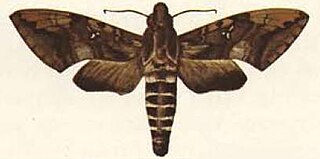
Nephele accentifera, the accented hawk, is a moth of the family Sphingidae. The species was first described by Palisot de Beauvois in 1821. It is common in most habitats throughout the Ethiopian Region, excluding Madagascar and the Cape Peninsula.
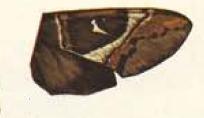
Nephele argentifera is a moth of the family Sphingidae. It is known from coastal bush and savanna from Somalia to northern South Africa.

Theretra capensis is a moth of the family Sphingidae. It is known from woodland and open habitats from the Cape to Zimbabwe, Zambia, Democratic Republic of the Congo, Malawi, Mozambique and East Africa.
















